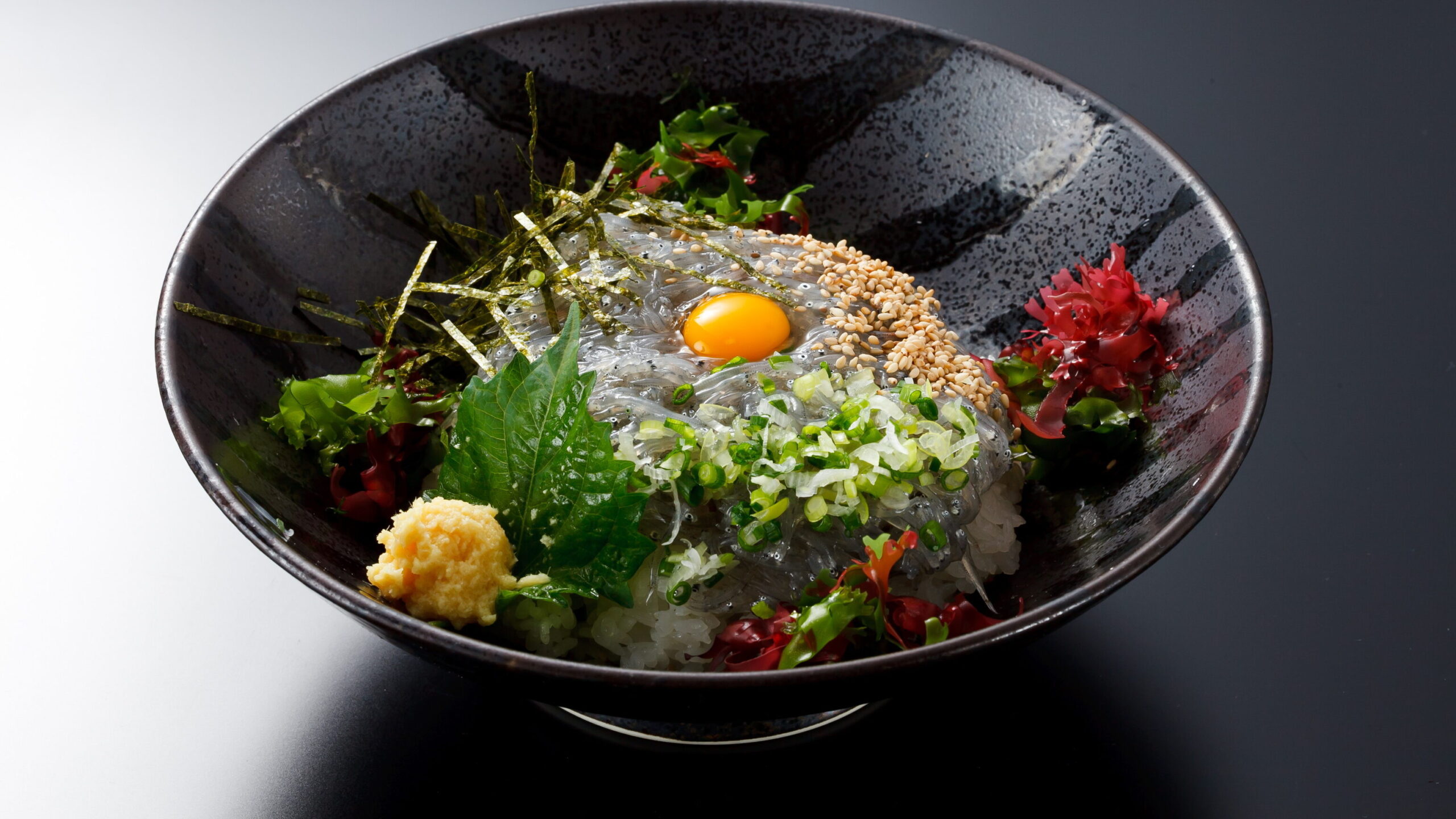
Imagine a bowl of glistening, raw whitebait served over a bed of rice. That’s Nama Shirasu Don, a local delicacy from the Shonan region of Kanagawa Prefecture in Japan. Known for its delicate flavor and melt-in-your-mouth texture, this dish is a true testament to the freshness of the local catch.
Dish Name: 生しらす丼 (Nama Shirasu Don)
- Region / Location: Kanagawa Prefecture, Japan
- Primary Area of Tradition: Shonan Region (Chigasaki, Kamakura, Enoshima, etc.)
- Main Ingredients: Raw whitebait (Nama Shirasu), rice
How It’s Eaten / Served
Nama Shirasu Don is typically prepared by placing fresh, raw whitebait directly on top of vinegared rice (sushi rice) or plain white rice. It’s commonly enjoyed with a drizzle of soy sauce. Some people like to add toppings such as nori seaweed, shredded shiso leaves (Ooba), chopped green onions, or a raw egg yolk for extra richness. You might also find variations using mentsuyu (noodle soup base), ponzu sauce, or ginger soy sauce for seasoning, depending on the restaurant or household.
Cultural Background and Preservation
Shirasu (whitebait), the young fish of sardines, has been harvested in the Shonan area since the Edo period. Initially, it was mainly processed into “tatami iwashi” (dried whitebait sheets). The development of cooking and refrigeration techniques later allowed for the direct sale of boiled (kamaage shirasu) and raw shirasu, which quickly gained popularity as a local specialty. The fishing grounds are located in Sagami Bay, which lies along the southern part of Kanagawa Prefecture. The proximity of these fishing grounds ensures that the whitebait can be brought ashore quickly, maintaining its exceptional freshness. Many shirasu fishing operators in Kanagawa handle everything from catching to processing and direct sales, earning them a reputation for the quality and taste of their shirasu. The fishing season runs for about ten months, from March 11th to December 31st. While shirasu can be caught almost year-round, the peak seasons are spring and autumn, coinciding with the spawning peaks of sardines. Spring shirasu is small and plump, while autumn shirasu is fattier, offering different but equally delicious experiences. The closed season is from January 1st to March 10th. Today, Nama Shirasu Don is widely served in restaurants along the Sagami Bay coast, particularly in the Shonan region. Fresh raw shirasu is also available at local direct sales outlets and supermarkets, making it more accessible for home consumption. “Shonan Shirasu,” the collective name for the whitebait caught in Sagami Bay, has been recognized as a Kanagawa Brand and one of the “100 Famous Products of Kanagawa,” promoting it as a valuable tourism resource. The Kanagawa Prefecture Shirasu Dragnet Fishery Liaison Council (Shirasu Council) actively promotes Shonan Shirasu and enhances its image through a blog sharing fishing conditions and direct sales information, and even a公認 song titled “Shirasu MY LOVE.”
Additional information:
- Whitebait (Shirasu): These are very small, immature fish, typically young sardines. They are translucent and have a delicate flavor.
- Vinegared rice (Sushi rice): Cooked white rice that has been seasoned with rice vinegar, sugar, and salt. It’s the base for many Japanese dishes, including sushi and donburi (rice bowls).
- Nori seaweed: Thin sheets of dried seaweed, often used as a topping or wrap in Japanese cuisine.
- Shiso leaves (Ooba): A fragrant herb with a refreshing, slightly minty flavor, commonly used as a garnish.
- Mentsuyu: A versatile Japanese soup base made from dashi (fish stock), soy sauce, mirin (sweet rice wine), and sugar.
- Ponzu sauce: A citrus-based soy sauce with a tangy flavor.
The information about regional cuisine featured on this website (Piggy's Grandma of Japan) is summarized and adapted from the Ministry of Agriculture, Forestry and Fisheries of Japan (MAFF) website, "Our Regional Cuisines"Additional commentary is provided based on the unique experiences and perspectives of the site's editors.
The copyright for the original content regarding regional cuisine belongs to the Ministry of Agriculture, Forestry and Fisheries of Japan.
The summaries and adaptations published on this site are intended for informational purposes only. Piggy's Grandma of Japan does not guarantee the accuracy or completeness of this information. For the most accurate and complete details, please refer to the original pages on the MAFF website.

